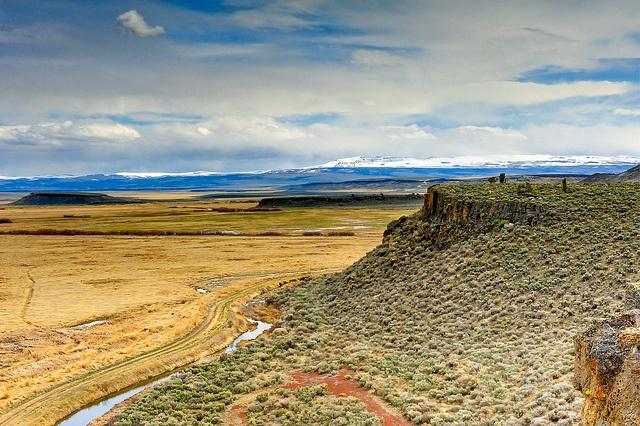
The altercations that led to the arrest of eight militants and the death of another outside the Malheur National Wildlife Refuge on Tuesday night signaled an abrupt change in the standoff that has pitted federal and local governments against armed occupiers for weeks. But it also drove home a question that many are asking: What will it take to resolve the ethical and philosophical standoff that's pitting communities against the federal government?
In the equally remote ranchlands of Idaho where I live, the question is just as salient. There is a growing disillusion with what it takes small farmers and ranchers to make a living. A 2011 report by the Department of Agriculture underscores this point: The cost for small ranches (under 50 head of cattle) to maintain their herds is four times what it is for large ranches (500 or more). And, as Tom Philpott points out in the Mother Jones, that also means there is limited incentive for small ranches to stay small: Mom-and-pop operations that bolster the organic or other niche markets have to fight all the harder to stay in business.
At the heart of that battle is grazing rights: the ability to feed cattle on land that is billed as "public lands." It's a controversial issue, and it has become more so for environmentalists who often see these public lands as the last hold-out for declining species; public agencies also realize there is a need to protect those species.
Yet the truth is, despite what the Malheur militants have suggested, many ranching communities have a good hand-in-glove relationship with local public agencies like the Federal Bureau of Land Management (BLM). In one southwest Oregon community, ranchers work patiently with the BLM when grazing lands need to be adjusted to accommodate migrating flocks. Public lands like Malheur often exist for the benefit of the local ranchers as much as the wildlife enthusiasts, both of whom pay into the system that supports the maintenance of those lands.
In this day and age of dwindling public resources and escalating costs, it's sexy to occupy federal buildings and lands and make broad-sweeping statements about returning those lands to a time and place when guns settled issues more than taxes and negotiations. But standoffs don't get jobs done. They don't pay for fire mitigation or stop rampant disease that threatens stocks and water resources.The free-for-all approach that Ammon Bundy has proposed won't keep those lands clean and those resources available for grazing. And it won't pay the bills.
And they don't really protect rights either, as the militants would like to suggest. Bundy's fight is an age-old battle that, thankfully, many rural communities founded by white pioneers have realized was not only unjustifiable, but unethical to assume. Small communities in the 21st century realize that survival is very much a partnership with local tribes, and there is little gain in arguing who came first. Raising that red flag only raises old scars and old prejudices.
It's probably no coincidence that the Bundy clan picked Malheur to hole up -- an area that, as its name describes, is known as much for misfortune as for its once populous migration of pioneers. It's a name that pegs the sentiment well when it comes to the struggles of small ranchers these days, who face escalating costs, dwindling resources and at times intransient federal agencies. But as the past weeks demonstrated and continue to play out, it hasn't been the support of local ranchers that gave the Bundy clan a microphone, but that very social media he professes not to use: a media that can fuel discord better and faster than any town meeting and that inevitably captures media attention.
And that is perhaps the most worrisome aspect of this standoff. The militant takeover of a refuge that many Oregonians, let alone Americans in general, couldn't have found on a map two months ago has publicized not the plight of the average struggling rancher, but the value of a stunt orchestrated by carefully-dressed militants with a penchant for fame.
Images: 1) USFWS- Pacific Region; 2) Oregon Dept. of Transportation; 3) USFWS - Pacific Region
Jan Lee is a former news editor and award-winning editorial writer whose non-fiction and fiction have been published in the U.S., Canada, Mexico, the U.K. and Australia. Her articles and posts can be found on TriplePundit, JustMeans, and her blog, The Multicultural Jew, as well as other publications. She currently splits her residence between the city of Vancouver, British Columbia and the rural farmlands of Idaho.














